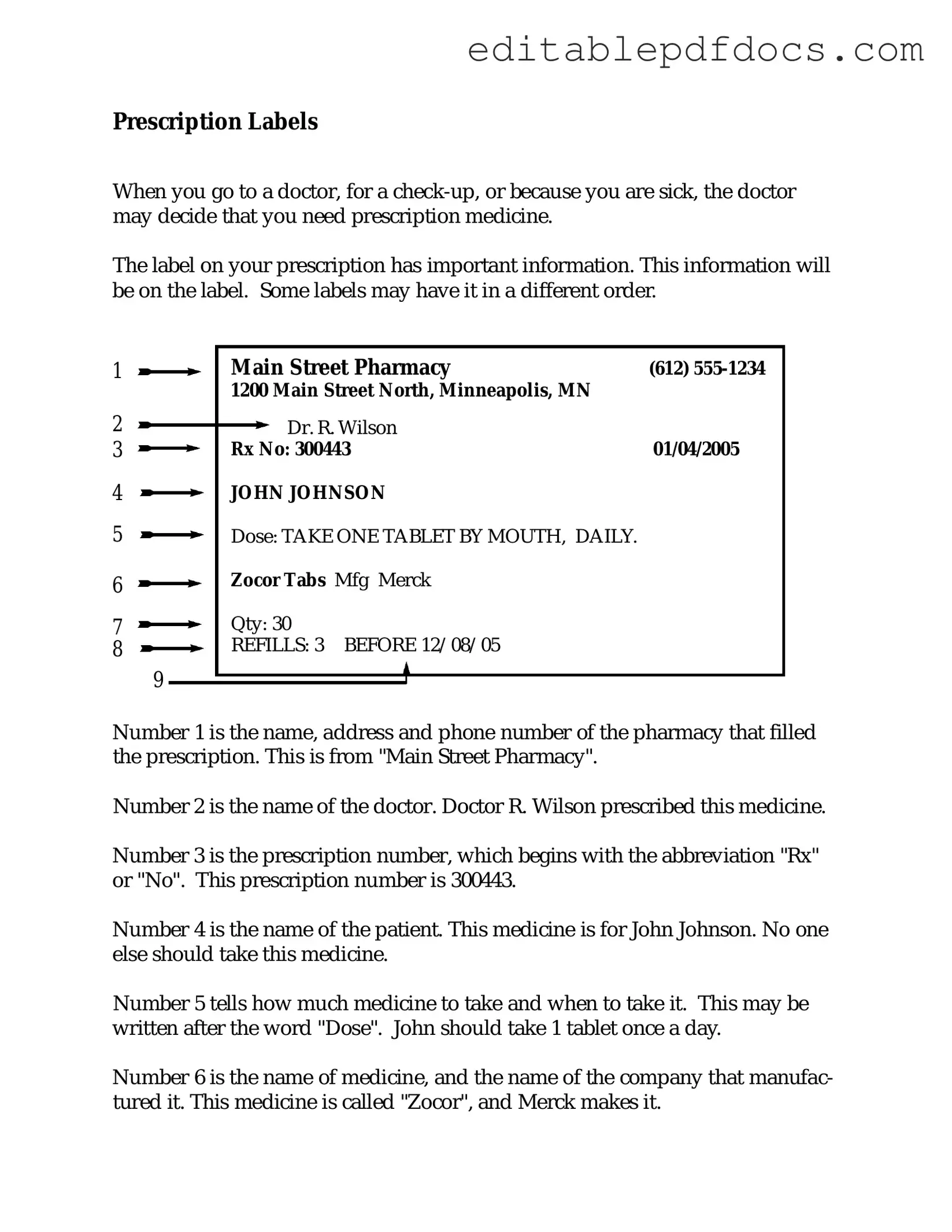Filling out a Prescription Label form accurately is crucial for ensuring that patients receive the correct medication. However, several common mistakes can lead to confusion and potential health risks. Understanding these errors can help improve the process.
One frequent mistake is omitting the patient's full name. Without a complete name, it becomes difficult for pharmacists to verify the prescription and for patients to identify their medication. Always double-check that the name matches the identification provided.
Another common error is incorrect dosage information. Patients may write down the wrong amount or misinterpret the prescribed dosage. This can lead to underdosing or overdosing, both of which can have serious consequences for health.
Inaccurate medication names also pose a significant issue. Sometimes, patients may confuse similar-sounding drug names or write down the wrong medication altogether. It’s essential to ensure that the medication name is spelled correctly and matches what the healthcare provider prescribed.
Many individuals forget to include the prescribing physician's information. This information is necessary for pharmacists to verify the legitimacy of the prescription. Including the doctor's name and contact details can prevent delays in processing the medication.
Another mistake often made is neglecting to specify the quantity of medication needed. This can lead to patients receiving insufficient medication or having to make multiple trips to the pharmacy. Clearly stating the quantity helps streamline the dispensing process.
Some people fail to provide clear instructions for use. Whether it’s the frequency of doses or specific directions, clarity is key. Ambiguous instructions can lead to misuse of the medication, which can be harmful.
In some cases, individuals may overlook allergies or other medical conditions. Noting these details on the form is vital for ensuring that the prescribed medication is safe for the patient. This information can help pharmacists catch potential drug interactions.
Additionally, not signing the form is a common oversight. A signature confirms that the patient has reviewed the prescription and agrees to the terms. This small step can prevent misunderstandings later on.
Finally, many people do not keep a copy of their Prescription Label form. This can lead to confusion if there are any discrepancies at the pharmacy. Keeping a copy ensures that patients have a reference for their medication and dosage.
By being aware of these common mistakes, patients can improve their experience when filling out Prescription Label forms. Attention to detail is essential for ensuring safe and effective medication use.
